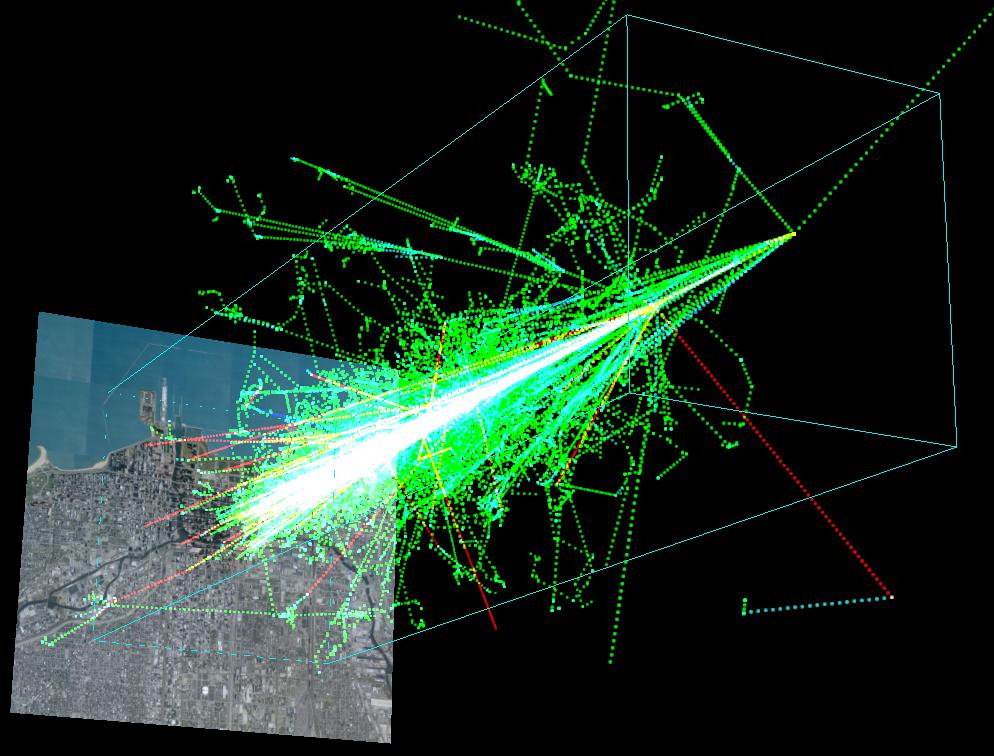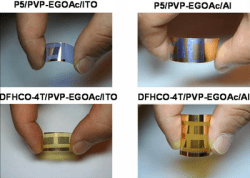Space is a very dangerous place to be, whether you’re a human or a transistor. Highly energetic particles may hit astronauts, causing damage to their DNA, but as computers become more and more powerful (yet more and more sensitive); the hazards to unprotected circuitry are increasing. There are many examples of satellites and robotic space missions getting hit by energetic particles, sometimes with crippling results. Not only are millions of dollars at stake, lives are put at risk too. Now, using a new technique and material, Northwestern University scientists have developed a new type of transistor with a twist and it is currently being tested on the International Space Station…
Only a few days ago, the spectre of space radiation reared its ugly head. On June 4th, NASA reported that the Mars orbiter Odyssey had been switched to “safe mode” after the spacecraft’s onboard circuitry was hit by energetic particles from the Sun or from deep space. Fortunately, to avoid system errors, the satellite switched itself into “safe-mode” to await an investigation by mission control to assess any damage. It is not thought this event has caused any lasting harm to Odyssey, but it did cause delays in communications between Earth and Phoenix.
Other spacecraft have not been so lucky. One of the earliest examples of satellite failure through space radiation was the world’s first communications satellite, Telstar. In 1962, this historic satellite was launched to provide trans-Atlantic communications for the first time. Unfortunately, it was launched too soon after a high-altitude US nuclear weapon test codenamed “Star Fish Prime” (see the archival footage of the test) which resulted in manmade energization of the Earth’s Van Allen Belts, causing artificial aurorae in equatorial locations such as Hawaii. Little was known at this time about the response of electrical equipment inside a high-energy environment and Telstar was soon severely damaged as its transistors succumbed to the high energy particles a few months later.
As we now have a huge armada of satellites in orbit around the Earth, and an increasing number of exploratory craft throughout the solar system, there are many vulnerabilities to energetic particles ejected by the Sun.
To address this problem, scientists from Northwestern University sent their new design of transistor to the ISS in March on board Space Shuttle Endeavour. Since then these microscopic components have been rigorously tested and exposed to a space environment to see how the new material reacts.
Traditionally, computer transistors are manufactured from the semi-conducting material silicon dioxide. Your home computer uses them, deep space missions such as the New Horizons Pluto mission use them; silicon-based electronics have revolutionized the computing world. However, silicon dioxide transistors are susceptible to radiation. Should a high energy particle impact one of the microscopic transistors of millions that can be built in a microchip, silicon-based material captures the particle, causing a loss of charge or a build-up of charge. Either way, this is bad for computing as it can result in calculation errors.
The new transistors developed by Northwestern use a new type of gate dielectric material called self-assembled nanodielectric (SAND). SAND has an added benefit – they can be printed and they are flexible. This has obvious applications for flat-screen technology and condensing vastly complex circuitry into a very small space. As this is a departure from silicon dioxide, these transistors appear to be very robust when faced with a high-radiation environment here on Earth.
The ISS experiments are expected to take a year to complete, so the space computing world will be waiting to see if this new technology can revolutionize space-based instrumentation, protecting valuable spacecraft from the ravages of energetic particles…
For more information:
- “Northwestern Transistors Blast Off Into Space, Hang Out At International Space Station” – McCormick News Article
- “Intel to Protect Microchips from Cosmic Rays” – Universe Today
Source: EurikAlert



Hey! OK for the transistor! Now what is being done to protect human DNA? Anyone know?
if these transistors use a dieletric effect, as the name suggests, do they act or have properties in common with capacitors.
I don’t know
How do they actually work??
They are also working on new DNA for humans.